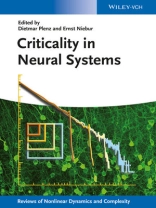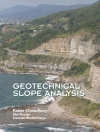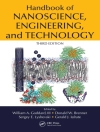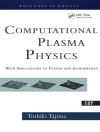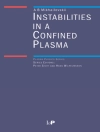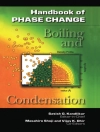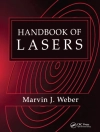Neurowissenschaftler suchen nach Antworten auf die Fragen, wie wir lernen und Information speichern, welche Prozesse im Gehirn verantwortlich sind und in welchem Zeitrahmen diese ablaufen. Die Konzepte, die aus der Physik kommen und weiterentwickelt werden, können in Medizin und Soziologie, aber auch in Robotik und Bildanalyse Anwendung finden.
Zentrales Thema dieses Buches sind die sogenannten kritischen Phänomene im Gehirn. Diese werden mithilfe mathematischer und physikalischer Modelle beschrieben, mit denen man auch Erdbeben, Waldbrände oder die Ausbreitung von Epidemien modellieren kann. Neuere Erkenntnisse haben ergeben, dass diese selbstgeordneten Instabilitäten auch im Nervensystem auftreten.
Dieses Referenzwerk stellt theoretische und experimentelle Befunde internationaler Gehirnforschung vor zeichnet die Perspektiven dieses neuen Forschungsfeldes auf.
表中的内容
Neuronal Avalanches in Cortical Networks
Dietmar Plenz
The Dynamic Brain in Action: Coordinative Structures,
Criticality and Coordination Dynamics
J. A. Scott Kelso
Critical Brain Dynamics at Large Scale
Dante R Chialvo
The Correlation of the Neuronal Long-range Temporal Correlations, Avalanche Dynamics with the Behavioral Scaling Laws and Interindividual Variability
J. Matias Palva and Satu Palva
The Turbulent Human Brain
Arnold. J. Mandell, Stephen E. Robinson, Karen A. Selz, Constance Schrader, Tom Holroyd and Richard Coppola
Thermodynamic Model of Criticality in the Cortex Based on EEG/ECo G Data
Robert Kozma, Marko Puljic and Walter J. Freeman
Neuronal Avalanches in the Human Brain
Oren Shriki and Dietmar Plenz
Critical Slowing and Perception
Karl Friston, Michael Breakspear and Gustavo Deco
Self-organized Criticality in Neural Network Models
Matthias Rybarsch and Stefan Bornholdt
Single Neuron Response Fluctuations: A Self-organized Criticality Point of View
Asaf Gal and Shimon Marom
Activity Dependent Model for Neuronal Avalanches
Lucilla de Arcangelis and Hans J. Herrmann
The Neuronal Network Oscillation as a Critical Phenomenon
Richard Hardstone, Huibert D. Mansvelder, Klaus Linkenkaer-Hansen
Critical Exponents, Universality Class & Thermodynamic: The ‘Temperature’ Of the Brain
Shan Yu, Hongdian Yang, Oren Shriki and Dietmar Plenz
Peak Variability and Optimal Performance in Cortical Networks at Criticality
Hongdian Yang, Woodrow L. Shew, Rajarshy Roy, and Dietmar Plenz
Criticality At Work: How Do Critical Networks Respond to Stimuli?
Mauro Copelli
Critical Dynamics in Complex Networks
Daniel B. Larremore, Woodrow L. Shew, Juan G. Restrepo
Mechanisms of Self-organized Criticality in Adaptive Networks
Thilo Gross, Anne-Ly Do, Felix Droste, and Christian Meisel
Cortical Networks with Lognormal Synaptic Connectivity and their Implications in Neuronal Avalanches
Tomoki Fukai, Vladimir Klinshov and Jun-nosuke Teramae
Jump Right In: Transitions to Criticality in Neural Systems with Dynamic Synapses
Anna Levina, J. Michael Herrmann, Theo Geisel
Non-conservative Neuronal Networks During Up states Self-organize Near Critical Points
Stefan Mihalas, Daniel Millman, Ramakrishnan Iyer, Alfredo Kirkwood and Ernst Niebur
Self-organized Criticality and Near Criticality in Neural Networks
J. D. Cowan, J. Neuman, and W. van Drongelen
Neural Dynamics: Criticality, Cooperation, Avalanches and Entrainment between Complex Networks
P. Grigolini, M. Zare, A. Svenkeson, B. J. West
Complex Networks: From Social Crises to Neuronal Avalanches
B. J. West, M. Turalska and P. Grigolini
The Dynamics of Neuromodulation
Gerhard Werner and Bernhard J. Mitterauer
关于作者
DIETMAR PLENZ is Chief of the Section on Critical Brain Dynamics in the Intramural Research Program at the National Institute of Mental Health. He received his Ph.D. in 1993 at the Max-Planck Institute of Biological Cybernetics and the University Tuebingen. Dr. Plenz joined the NIMH as an Investigator in 1999. He pioneered the development of in vitro networks to study and identify the emergence of neuronal avalanches in the brain.
ERNST NIEBUR is Professor of Neuroscience and of Brain and Psychological Sciences at Johns Hopkins University in Baltimore, USA. He holds degrees in Physics from the Universities of Dortmund, Germany and Lausanne, Switzerland, and a postgraduate certificate in Artificial Intelligence from the Swiss Federal Institute of Technology (EPFL). Prof. Niebur has authored more than 100 scientific articles in physics and computational neuroscience.
HEINZ GEORG SCHUSTER is Professor (em.) of Theoretical Physics at the University of Kiel in Germany. At the beginning of his academic career, he was appointed Professor at the University of Frankfurt am Main in Germany. He was a visiting professor at the Weizmann-Institute of Science in Israel and at the California Institute of Technology in Pasadena, USA. He is author and editor of research monographs and topical handbooks on chaos theory, nonlinear dynamics and neural networks, but also on popular science books, and editor of a Wiley series on Nonlinear Physics and Complexity.
